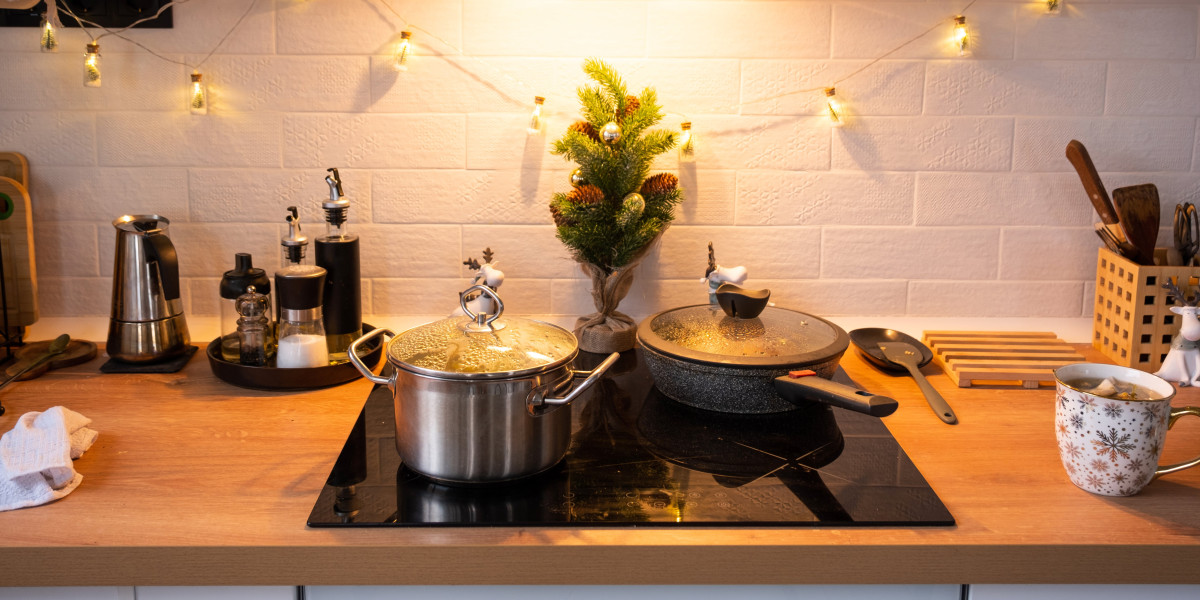The Comprehensive Guide to Built-In Ovens: Maximizing Kitchen Efficiency and Style
Built-in ovens are a vital feature in modern kitchens, combining functionality with streamlined design. They provide a smooth appearance, improve area efficiency, and frequently featured sophisticated functions that elevate the cooking experience. This short article will delve into the different types of built-in ovens, their benefits, necessary considerations throughout purchase, and maintenance tips.
What is a Built-In Oven?
A built-in oven is designed to be housed within kitchen cabinetry, offering an integrated look that saves counter space and enhances the looks of a kitchen. Unlike freestanding ovens, built-ins supply versatility in terms of placement and can be chosen to match the kitchen's design.

Kinds Of Built-In Ovens
There are several types of built-in ovens, each catering to various cooking requirements:
| Type | Description | Perfect Use |
|---|---|---|
| Single Oven | A basic oven with one cooking compartment. | Everyday cooking, baking. |
| Double Oven | 2 separate oven compartments, enabling for multi-tasking. | Large meals, multi-course cooking. |
| Wall Oven | Installed at eye level, usually with advanced functions. | Space-saving designs, ergonomic cooking. |
| Stove | Functions a fan to distribute hot air, cooking food uniformly. | Roasting, baking, and more. |
| Steam Oven | Uses steam for cooking, keeping wetness and nutrients. | Healthy cooking, baking bread. |
| Microwave | Integrates microwave and routine oven functions. | Quick meals, reheating. |
Benefits of Built-In Ovens
Built-in ovens offer numerous benefits, that makes them a popular option amongst house owners. Some crucial advantages consist of:
- Aesthetic Appeal: They can fit flawlessly into kitchen cabinetry, developing a sophisticated and uniform look.
- Area Efficiency: By using vertical space, they help optimize kitchen energy, specifically in smaller sized locations.
- Advanced Features: Many come equipped with smart technology, self-cleaning options, and accuracy cooking functions.
- Enhanced Accessibility: Wall ovens can be put at eye level, decreasing the requirement for flexing and making it much easier to keep an eye on cooking progress.
- Personalized Options: Built-in choices can be found in various sizes, finishes, and styles, allowing individualized kitchen style.
Factors to consider When Choosing a Built-In Oven
When picking a built-in oven, there are numerous elements to think about to ensure that the device aligns with the user's cooking choices and kitchen design:
- Size and Capacity: Measure the installation space to ensure the selected oven fits. Consider the oven capacity based on cooking requirements.
- Kind of Cooking: Think about the favored cooking methods-- do you bake, roast, steam, or cook rapidly? This will identify the kind of oven to choose.
- Functions: Evaluate smart features, temperature probes, numerous cooking modes, and cleaning options.
- Energy Efficiency: Look for energy ratings to save money on energy bills, specifically if the oven will be utilized often.
- Spending plan: Built-in ovens can vary considerably in rate, so it's necessary to establish a spending plan and think about long-lasting financial investment options.
Maintenance Tips for Built-In Ovens
To prolong the life of a built-in oven and maintain its performance, regular upkeep is crucial. Here are some practical tips:
- Cleaning: Regularly clean down the interior and outside surfaces. Use specialized cleaners for stainless steel finishes.
- Self-Cleaning: Utilize the self-cleaning function periodically to keep the interior spotless; nevertheless, avoid regular use to avoid wear and tear.
- Examine Seals: Inspect the door seals for any damage to avoid heat loss.
- Use Safe Cookware: Ensure that baking sheets and pans are suitable with the specific type of oven to avoid damage.
- Routine Inspection: Schedule professional upkeep checks a minimum of when a year to make sure whatever functions smoothly.
FAQs About Built-In Ovens
Q1: How do I choose the best size built-in oven for my kitchen?A: Measure
the allocated area for the oven and think about the overall capability you require based on your cooking routines.
Q2: Are built-in ovens easy to install?A: Installation can be complex and frequently requires expert support, especially for electrical and gas connections. Q3: How frequently must I clean my built-in oven?A: It's a good idea to clean the oven monthly and use the self-clean feature periodically based upon usage frequency. Q4: Will a built-in oven increase the value of my home?A: Yes, a high-quality built-in oven can enhance the kitchen's appeal, possibly increasing home worth. Q5: Can built-in ovens requirements while boosting general kitchen style. By thinking about size, type, features, and upkeep, homeowners can choose a built-in oven that serves their cooking style and way of life effectively. Buying a built-in oven not only elevates kitchen aesthetics but also transforms the cooking experience, making meal preparation more pleasurable and effective.
be utilized for all types of cooking?A: Most built-in ovens can manage a range of cooking methods, but specific types, like steam or stove, stand out in particular areas. Built-in ovens are a great addition to modern cooking areas, blending performance with design. With their multiple types, advantages, and personalized options, they accommodate diverse cooking








